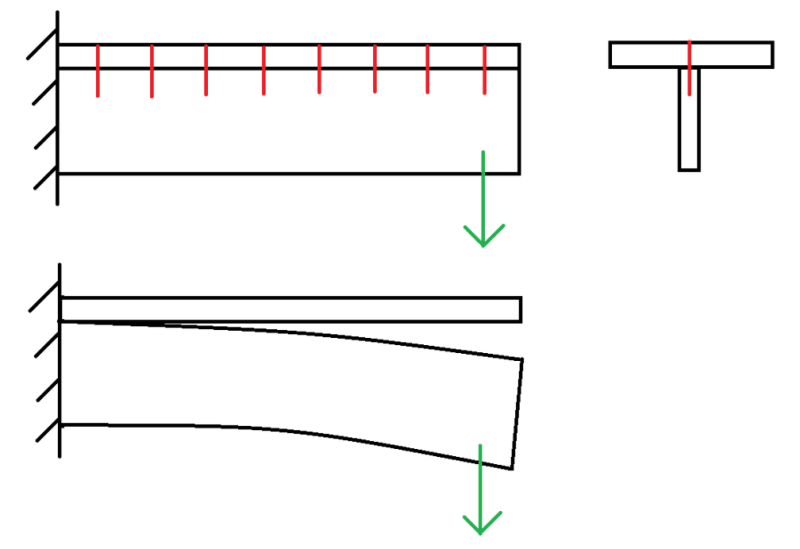willindsey
Aerospace
Hello,
I am working out a problem at work. To frame the problem as a conceptual one, I am designing a bolted connection to secure a flange to a web. The bolts are installed through the "top" of the flange and into the web. Say its a cantilever beam with a point load at the tip. I have computed the shear flow and determined the shear stress in the fasteners. Is there also a tensile/compressive load through the fasteners? If so, how would one go about finding that load?
It seems in the real world that it is unlikely the fasteners are in pure shear and there would be some form of a tensile/shear loading on the fasteners. An idea I am considering to compute the tensile/compressive fastener loading is to figure out the forces required for each component to have the same deflection of the built up beam. The max force would then dictate the tensile/compressive force in the fastener. This would essentially account for load sharing and continuity.
Any references and resources would be much appreciated.
Thank you all
I am working out a problem at work. To frame the problem as a conceptual one, I am designing a bolted connection to secure a flange to a web. The bolts are installed through the "top" of the flange and into the web. Say its a cantilever beam with a point load at the tip. I have computed the shear flow and determined the shear stress in the fasteners. Is there also a tensile/compressive load through the fasteners? If so, how would one go about finding that load?
It seems in the real world that it is unlikely the fasteners are in pure shear and there would be some form of a tensile/shear loading on the fasteners. An idea I am considering to compute the tensile/compressive fastener loading is to figure out the forces required for each component to have the same deflection of the built up beam. The max force would then dictate the tensile/compressive force in the fastener. This would essentially account for load sharing and continuity.
Any references and resources would be much appreciated.
Thank you all


